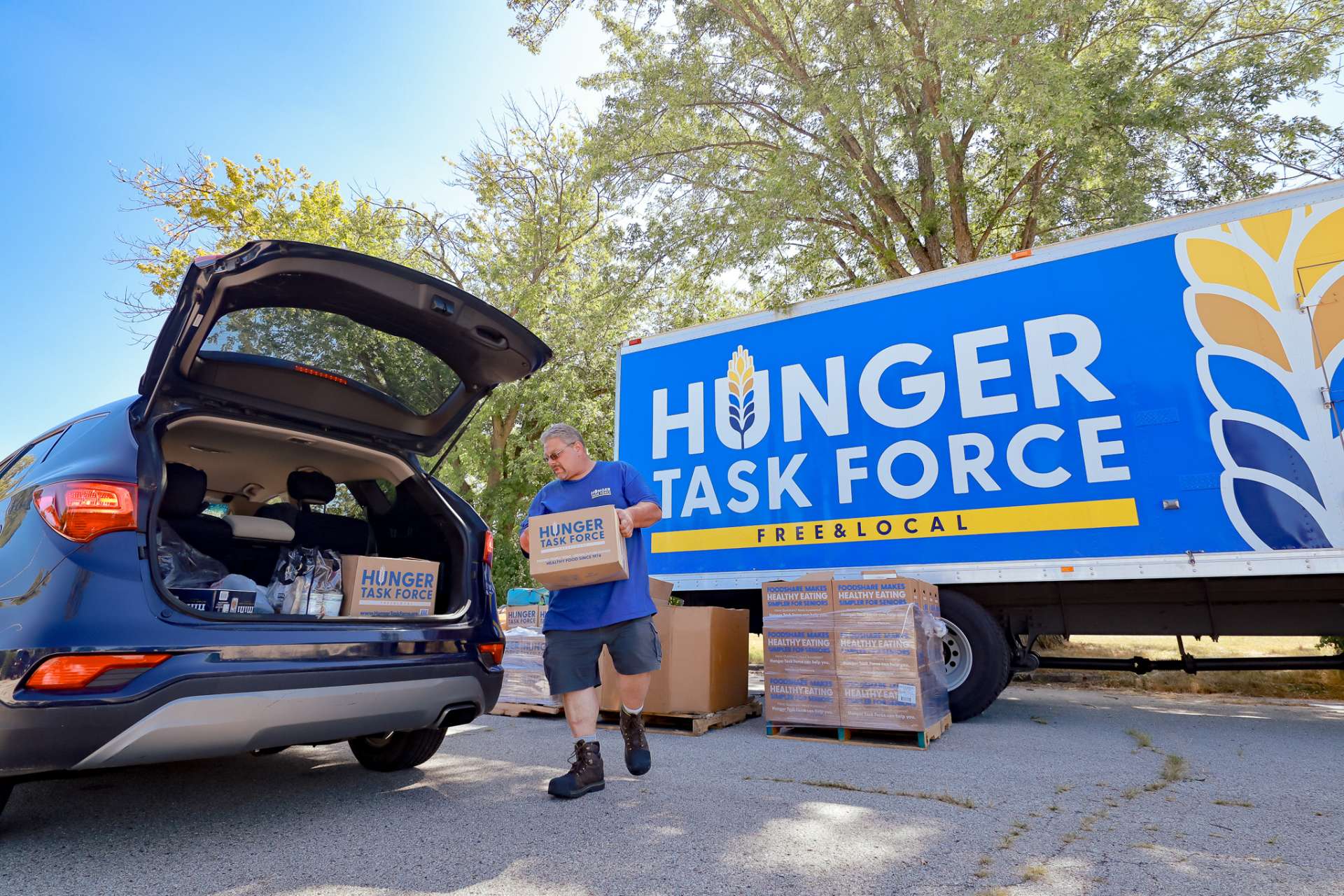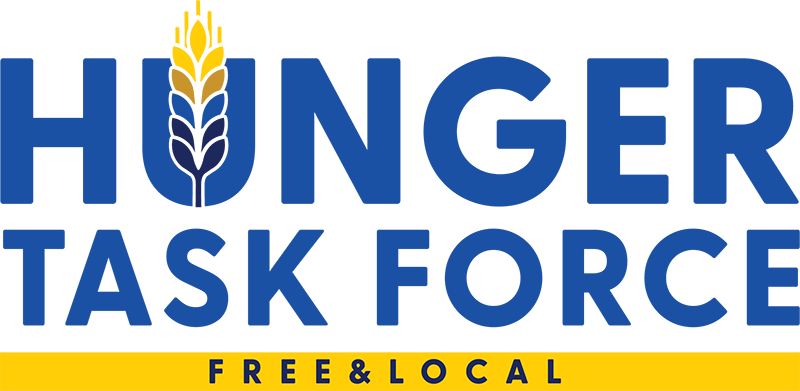How One Milwaukee Food Bank Is Handling the Drop in USDA Funding
By: Brian Calvert, Civil Eats
For months, Matt King kept an eye on federal food aid policies. He also stayed in constant contact with Wisconsin’s Department of Health Services, which, among other things, manages food disbursements from the U.S. Department of Agriculture (USDA). King is the chief executive officer of Hunger Task Force, which operates a food bank, a 280-acre farm, and other aid programs in Milwaukee, providing nutritious food to more than 50,000 people every month in Wisconsin’s most populous city.
In particular, he was tracking available food distributions from the Emergency Food Assistance Program, or TEFAP. TEFAP is a federal program that provides food assistance to people with low incomes, often by supplementing food banks. An affable, soft-spoken advocate for nutrition, King was planning on the TEFAP distributions to stockpile food supplies heading into summer.
Suddenly, in late March, those TEFAP distributions were canceled. There was no formal communication around the cancelled disbursements, amounting to $2.2 million in Wisconsin, he says. They were just no longer available. Hunger Task Force lost five full truckloads of food, including canned chicken, cheese, milk, and eggs, along with other deliveries of turkey breast, chicken legs, pulled pork, and pork chops. More than 300,000 pounds of food, worth $615,000, was gone. Nationwide, a total $500 million allocated for TEFAP had been cut, leaving many food banks scrambling.
It was the second blow in March to the nation’s food safety net, as the Trump administration continued sweeping cuts to federal programs and funding. Hunger Task Force and other food banks were already coping with the loss of $500 million from the USDA’s Commodity Credit Corporation. The CCC oversees the Local Food Purchase Assistance Cooperative Agreement Program (LFPA), which provided funds that allowed King to purchase fresh food, especially produce, from local farmers.
Agriculture Secretary Brooke Rollins has said that the USDA is cutting funding allocated during the Biden administration that is excessive or unnecessary. In an April 3 letter to Senator Amy Klobucher (D-Minnesota), the ranking member of the Senate’s Committee on Agriculture, Rollins said the Biden administration had “inflated statutory programs with Commodity Credit Corporation dollars without any plans for long-term solutions, and even in 2024, used the pandemic as a reason to make funding announcements.”
During trips to Pennsylvania and Arkansas last week, Rollins said that states currently have more than enough funding for programs like TEFAP and that the cancelled funds were extra distributions that should have ended with the pandemic. “The money is there,” she said, and going forward the programs will be “more effective, more intentional.”
In fact, food banks are facing major shortfalls from USDA cuts, with a combined loss of $1 billion from cuts to LFPA and TEFAP.
Far from Washington, D.C., King’s Hunger Task Force, along with food banks across the country, faces drastic cuts to programs and funding, even as the cost of living, including food, continues to climb.
Civil Eats recently spoke with King to learn the extent of the cuts—and how his organization plans to move forward.

How will you close the gap in food deliveries created by the cuts in federal funding?
It’s been a challenge, and especially given the short notice. One of the real problematic aspects of the cut to the LFPA program, specifically, was that there didn’t seem to be much of a consideration for the impact on the small businesses and the impact on the farmers who were operating under the pretense that the program was continuing for the upcoming growing season.
Many of them had already gone out and purchased the supplies and essentially made financial commitments, only to have the rug kind of pulled out from underneath them. Many of them had already planted their seeds and had started their seedlings for the upcoming growing season. So, for us, it was talking to some of our trusted, long-time donors and explaining the situation.
Our community of donors is also very much committed to local agriculture and supporting growers and producers, so they were able to help us to fill that gap.
What will the TEFAP interruption mean for the people of Milwaukee who have been counting on food banks?
Well, over the past year, we have experienced a 35 percent increase in visits to local food pantries. Right now, across all of our programs, we’re serving over 50,000 people every month, and over the last five years, just here in Milwaukee, the effects of housing and rent increases have been really acute.
We’ve experienced an over 30 percent increase over five years in average rent. When you add all these things together—a dramatic increase in average rent, the increase costs of living, particularly around groceries, as well as then the end of many of the pandemic-era benefits—all these things have contributed to a pretty stark increase in need. So, these cuts come at a really challenging time.
We currently have strong community support and enough inventory to make sure that our network of food pantries stays stocked.
But if the need continues to increase at the rate that it has been, there does become a tipping point. We’re about a year out from a point at which a continued increase in need would need to be accompanied with an increased level of food inventories to be able to keep up.
Agriculture Secretary Brooke Rollins has said these cuts were made because the additional funding to these programs was “unnecessary.” How do you respond to that?
These particular shipments that were canceled were authorized because of the dramatic increase in need that food banks around the country have experienced. A lot of that is due to the increased cost of living that people around the country are experiencing, in particular housing, but also groceries. These shipments were a necessary part of supporting the food banks’ capacity to meet that growing need.
During the first Trump administration, when similar tariffs were enacted, the USDA purchased a lot of food to stabilize commodities and to stabilize food markets and food pricing. Right now, we’re taking a measured approach and purchasing some items, but also monitoring, to see whether or not similar investment from the USDA will be made to support producers who might be affected by the current tariff situation.
Can you describe the relationships that you’ve built with local farmers due to some of the increases in this support and funding? How do you think that those relationships are going to be impacted by these cuts?
These programs have been vital for our ability to provide access to healthy food, but they’ve also been vital for the farmers that we partner with, and we’ve been able to forge some really meaningful connections and relationships with producers here in our state. And those relationships will continue, because those weren’t contingent on a funding source for many of the farmers. They not only have appreciated the market for their products, but also the ability to see their products going to help people in need. So they don’t want to see that go away.
As we all know, there’s a lot of risk that exists within farming from one year to the next, and having the security of some of these contracts has really benefited American agriculture and a lot of American small businesses. So, from our perspective, these programs are not only vital for the access to healthy food for people in need, but also really vital to our economy.
Because our commitment and partnership and friendship with our local producers here in Wisconsin runs so deep, it was no question about whether we were going to continue that programming, so we have honored those commitments, essentially with our own version of the LFPA program.
What are the ways that farmers or members of the public can help their local food banks?
Well, food banks around the country are reliant upon the generosity and compassion of their community, and that includes people giving of their time to volunteer, people giving of their funds to help the organization run and to make food purchases where needed, but then also donations of food. So we would encourage people to find a way that makes sense for them to get involved with their local food bank.
For farmers, whether it’s the possible upcoming farm bill process or whether it’s the current federal budget negotiation and reconciliation that’s happening at the Ag Committee level right now, farmers have an opportunity to reach out to their federal legislators to let them know that as constituents, they support these [LPFA and TEFAP] programs being prioritized and invested into.
I think that that’s the most impactful way they can get involved. We’ve done visits with our legislators, and it’s been our food bank and the farmers together really demonstrating our mutual support for programs like this.
The interview has been edited for length and clarity.
